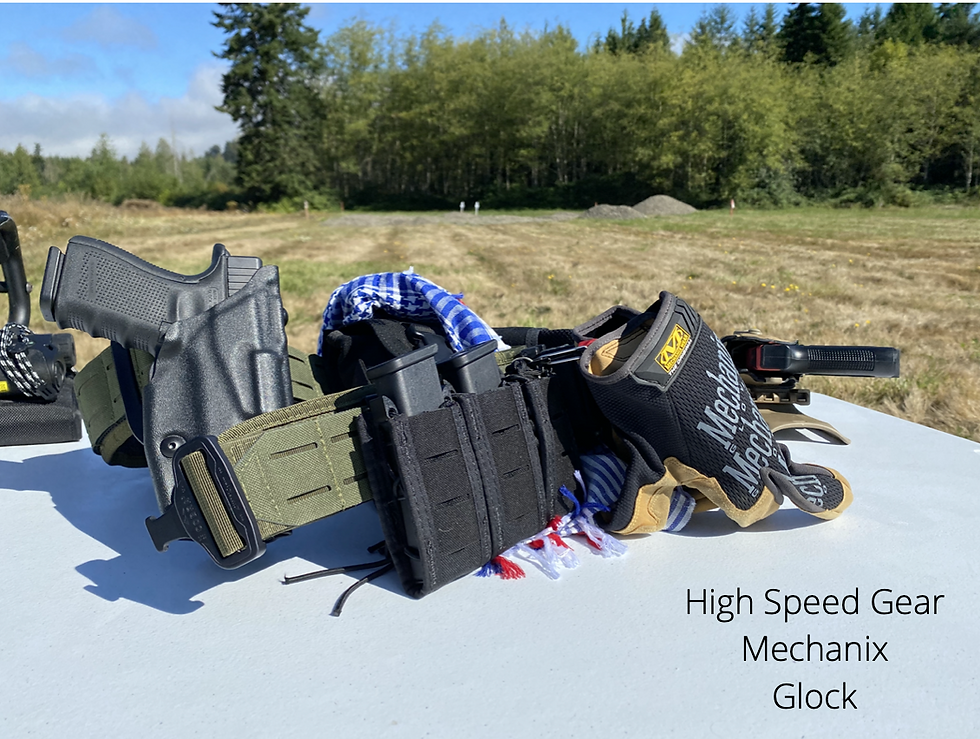So you’ve already selected a pistol, and you have a pretty good mind of what type of holster you want. (if not, see our blogs about pistol selection and the use of holsters) Now the next step: finding your new gun somewhere to hang its hat. There are so many options out there, and it can be confusing for the new gun owner. Don’t fret, there are over six million of you (a bald eagle cries a tear of joy) so far this year, so your questions are not unique. This debate is one that is often repeated in firearms circles. Not everyone needs or wants a full combat loadout to do some range training plinking on Sunday afternoon with the kids. Likewise, not everyone can have a concealed rig, a range rig, an assaulter rig, and a recon rig. Their budgets or needs just don’t support all that hardware. So we will try to show you below some basics between the general types that will hopefully inform you on your journey into the maddening world of modular belts.
If you’re like us here at Range U, you probably are trying to be as multiuse as possible with your gear and with an eye for economy. Pandemic is hitting us all in the wallet. Ideally, that first gun purchase would work just as well as a concealed firearm as one to train with on a range. This is mainly seen in the differences between a subcompact pistol and other larger profile firearms. ( if you haven’t tried taking professional all-day range training with a subcompact, you’re lucky) I bring this up first because if you’ve already made a purchase and taken that leap in your little adventure book, it will tailor what equipment you can buy to support that firearm.
Today we'll mainly be talking about outside the waistband (OWB) type setups to cover the broadest spectrum possible. A one size fits most approach. A simple training belt can be furnished from a sturdy leather or nylon belt consisting of the holster belt and magazine holder(s). These are the most basic types and can be found almost anywhere. The critical thing to remember is that the belt must be sturdy enough to support the weight of the gun and can be secured tightly enough so that when drawing, the holster doesn’t ride up the body. When moving, you don’t want the holster placement shifting horizontally or vertically around your body.
Some types of leather and nylon belts


The next type is more for the range training/combat style of belts, commonly referred to as a “battle belt.” Not really used for concealed nor everyday use unless you’re in very niche industries. These also come in a few types. Padded or unpadded. Single style with attachment points or the two-piece system with an inner and outer belt. The differences in these mainly are between aesthetics and cost. The sexier it looks, the more operator-esque, the more it’s going to cost. The advantage to these belts however, are numerous. For those that train regularly (at least a couple times a month), they allow for more attachment points for gear than your basic belt/holster combo.
Some types of “battle belts”



Now having gone over the types of belts out there, you can add magazine holders and possibly a flashlight or make space for a multi tool-all on a battle belt. Or, you can go sleek and buy nothing but Kydex that has been wrapped or treated to your personal specifications. This way you can show off your equipment for all those ogling eyes back at the loading zone.
Everything is going to come down to your intended purpose and unfortunately, not everything fits all applications. Concealed carry considerations are much different from the competitor or professional use ones. The best advice we can give you is to not rush into purchasing everything all at once. The gun industry is filled with opinions that will tell you what you should have or buy or this or that, though everyone is friendly, not everyone knows what they’re talking about.
Take your time, ask to borrow people’s equipment, or ask questions on different gear out there. Yes, get on YouTube and see what industry professionals are using or see if they have an opinion on items you’re interested in. Don’t just take their word for it. To be a responsible gun owner, you must be able to think and know when to shoot. That thinking requirement doesn’t end after the finger comes off the trigger. Continue to learn and decide for yourself. Because unless you’re in a very niche industry or getting into competitive shooting, they all pretty much do the same thing. You might find what works best for you is something unexpected.
Justin, once again this blog hits the proverbial nail on the head. Gear choice should be economical yet sturdy. Gear should meet the activity. Personally I try to keep my gear multipurpose. Thank you again for a great article.